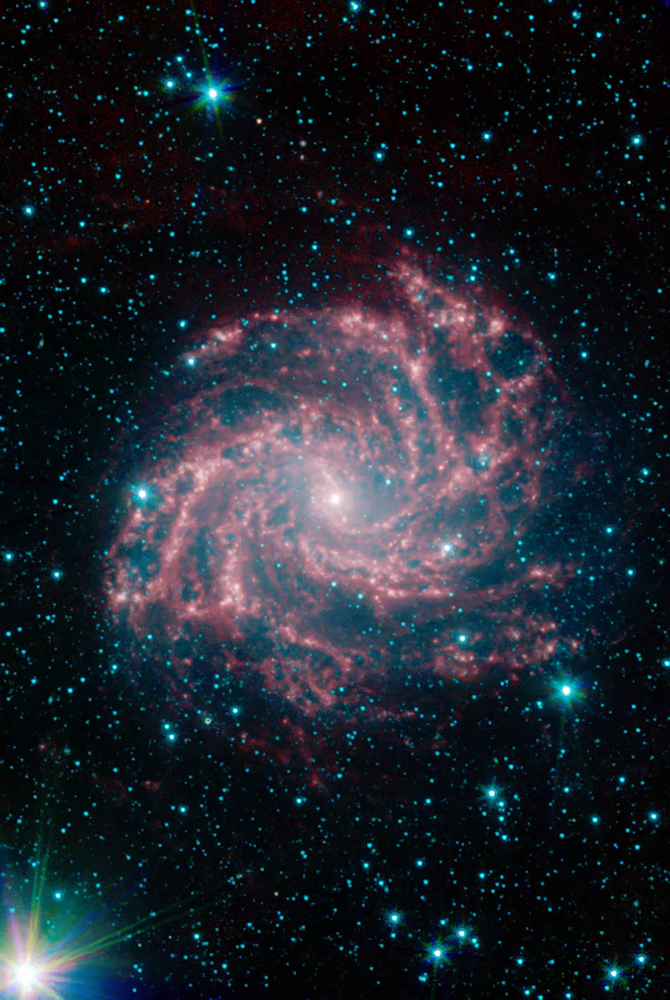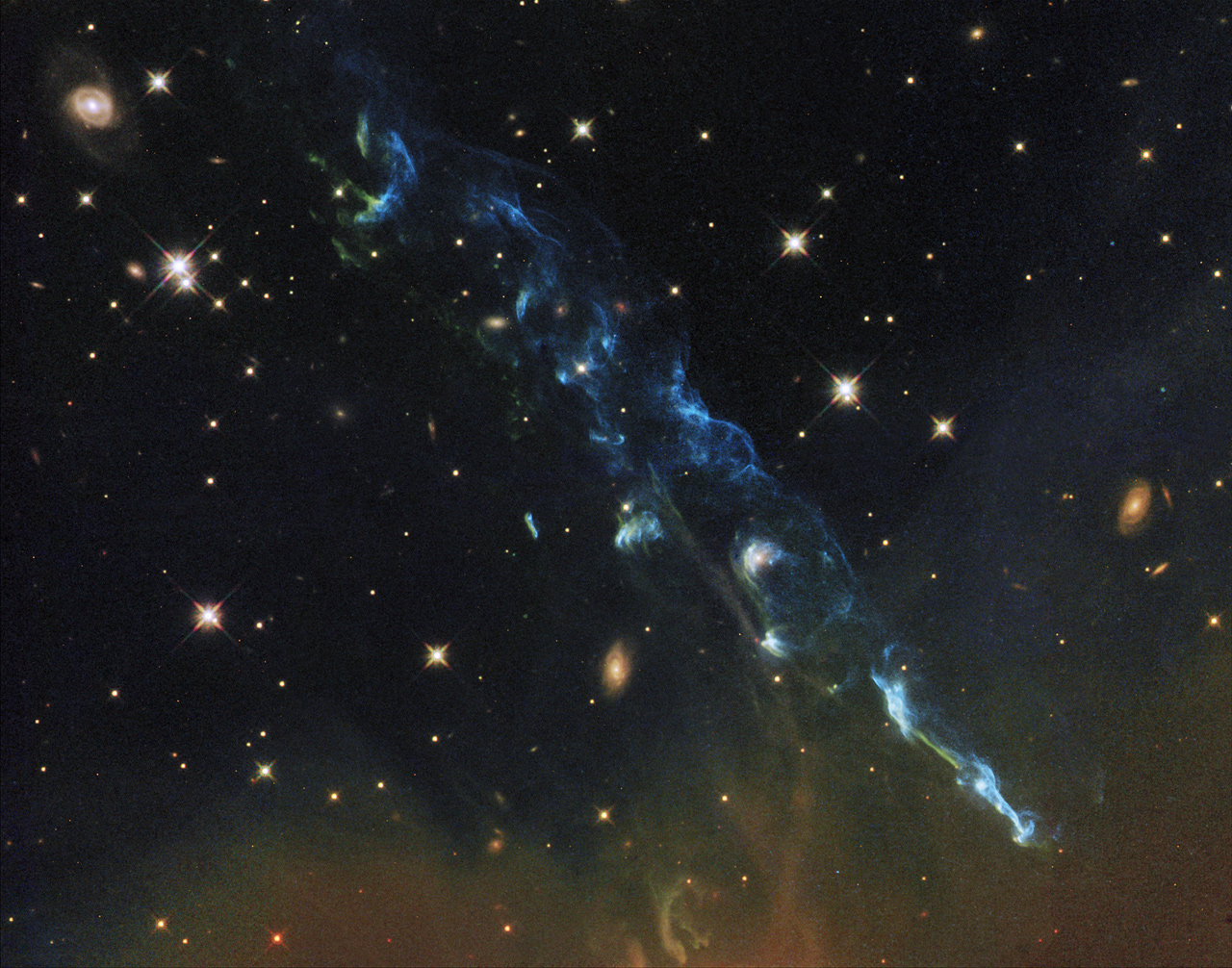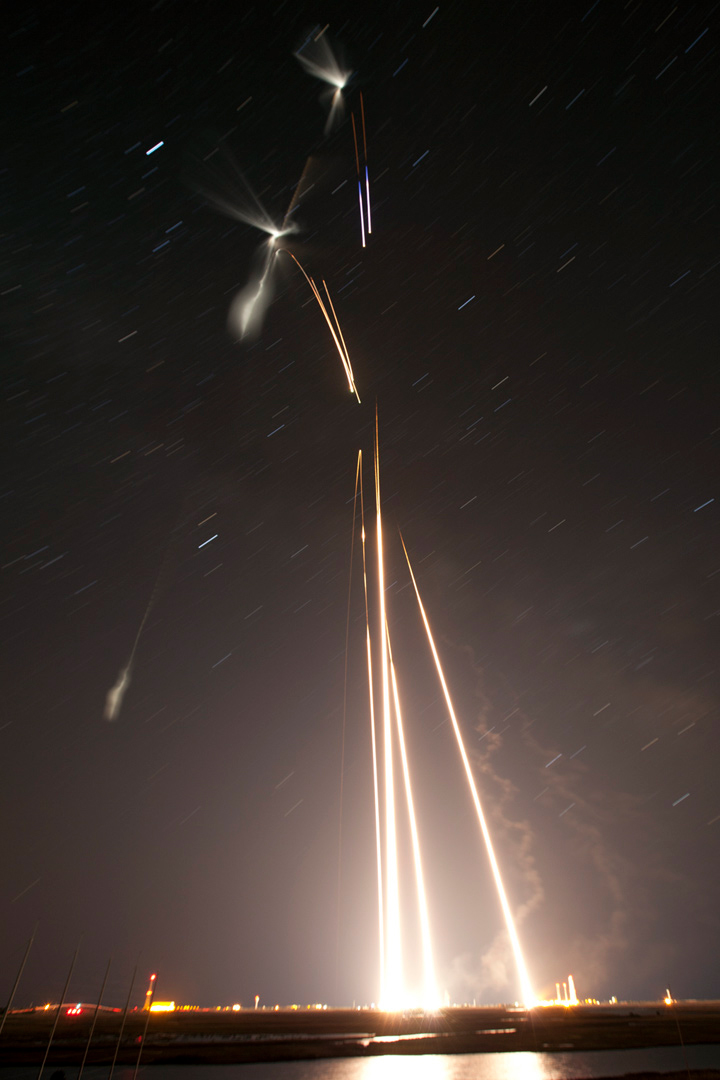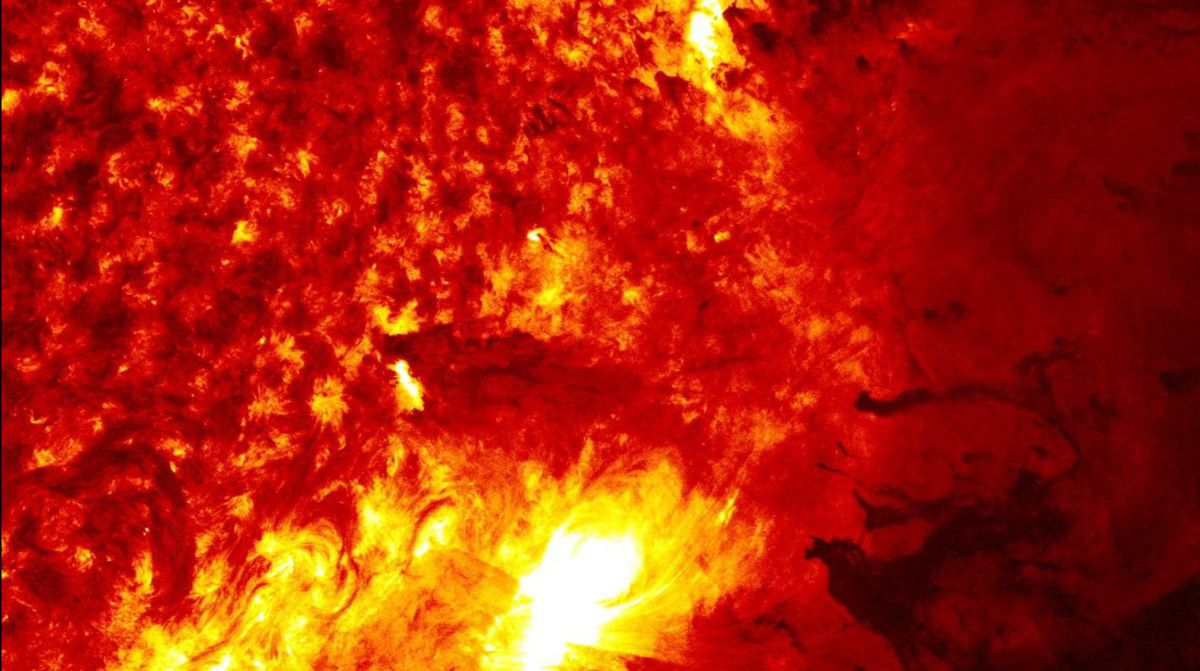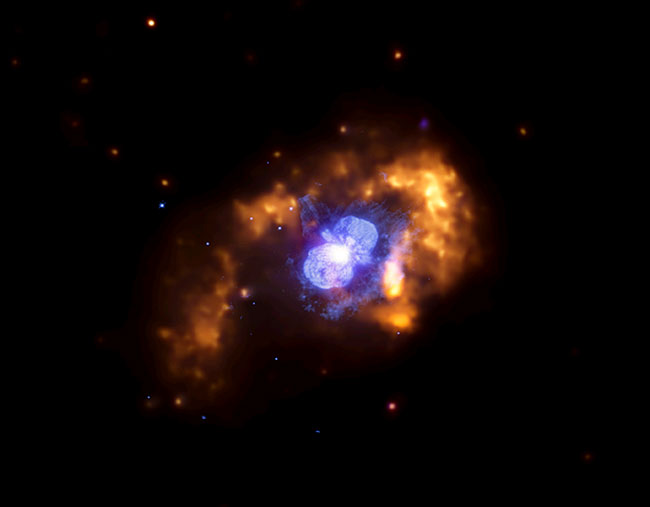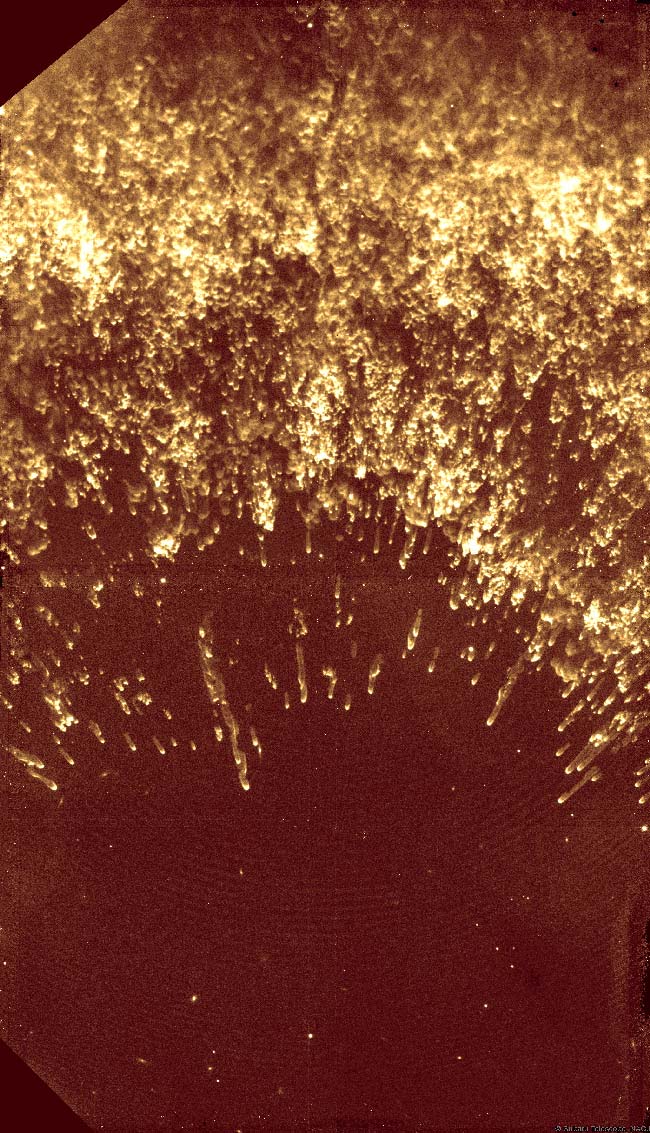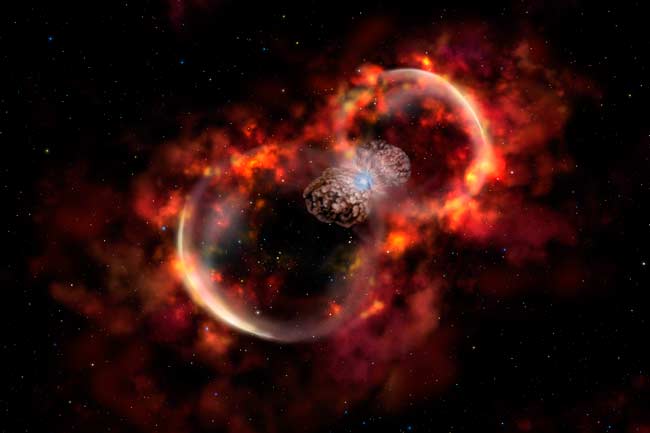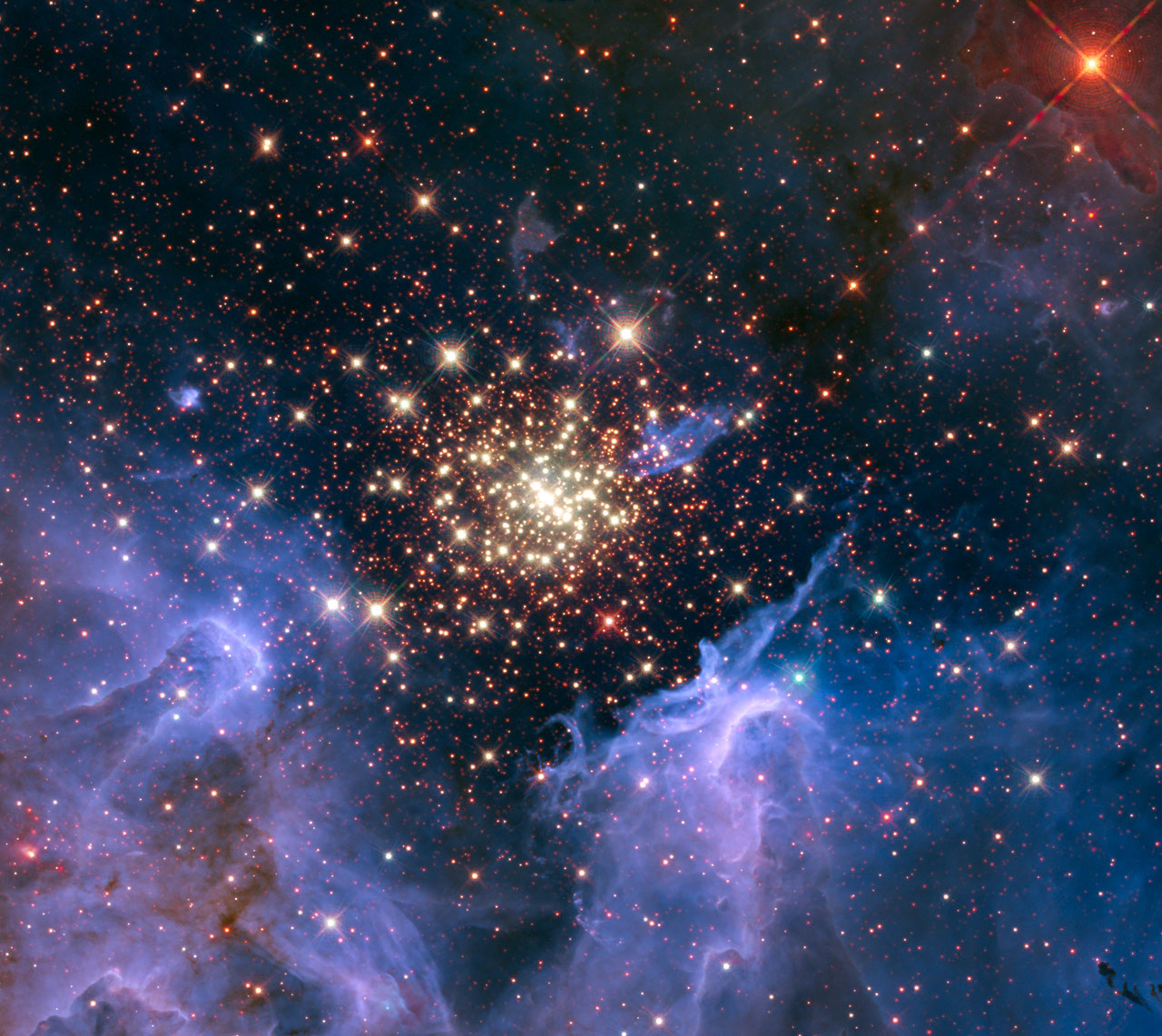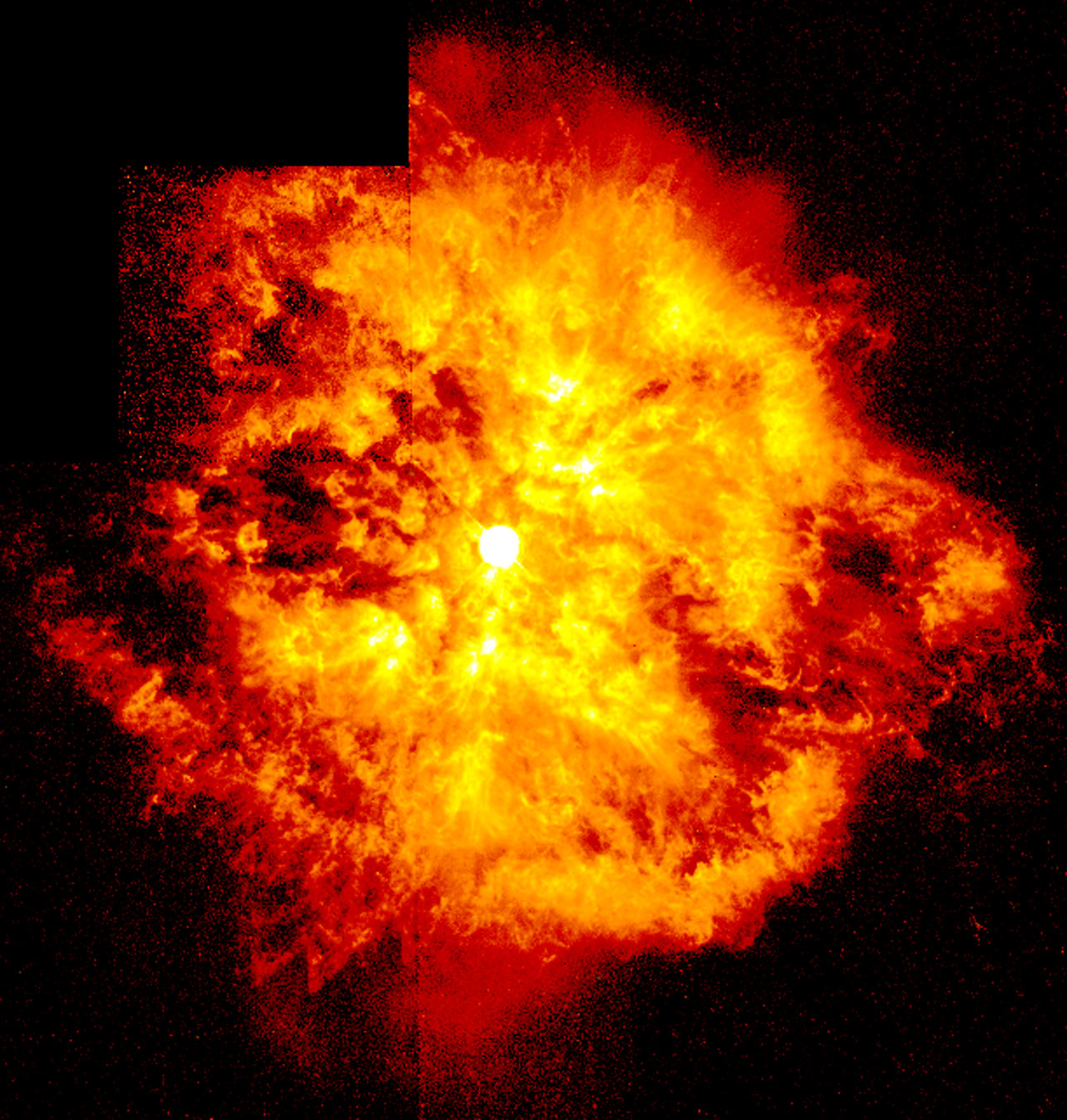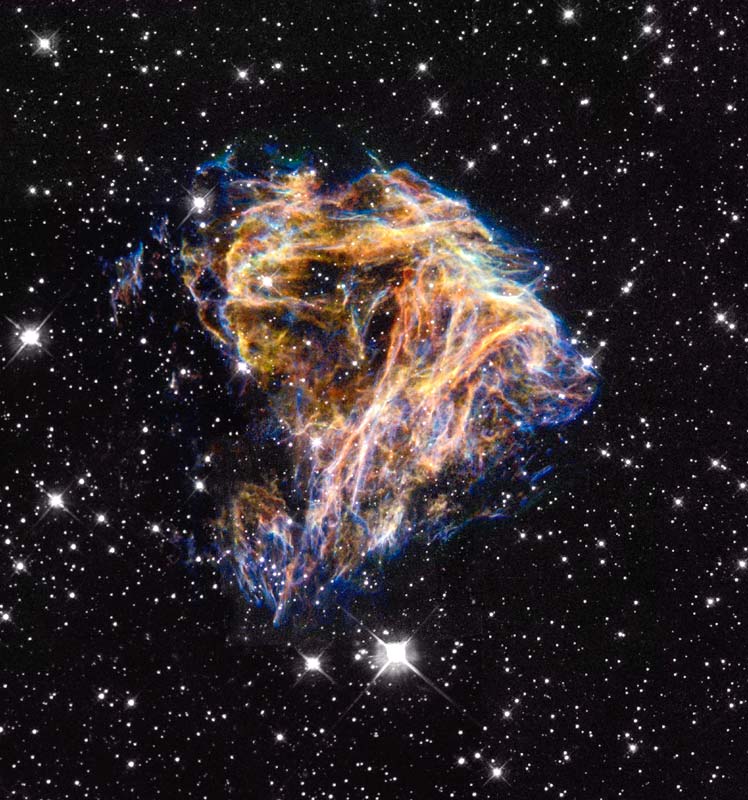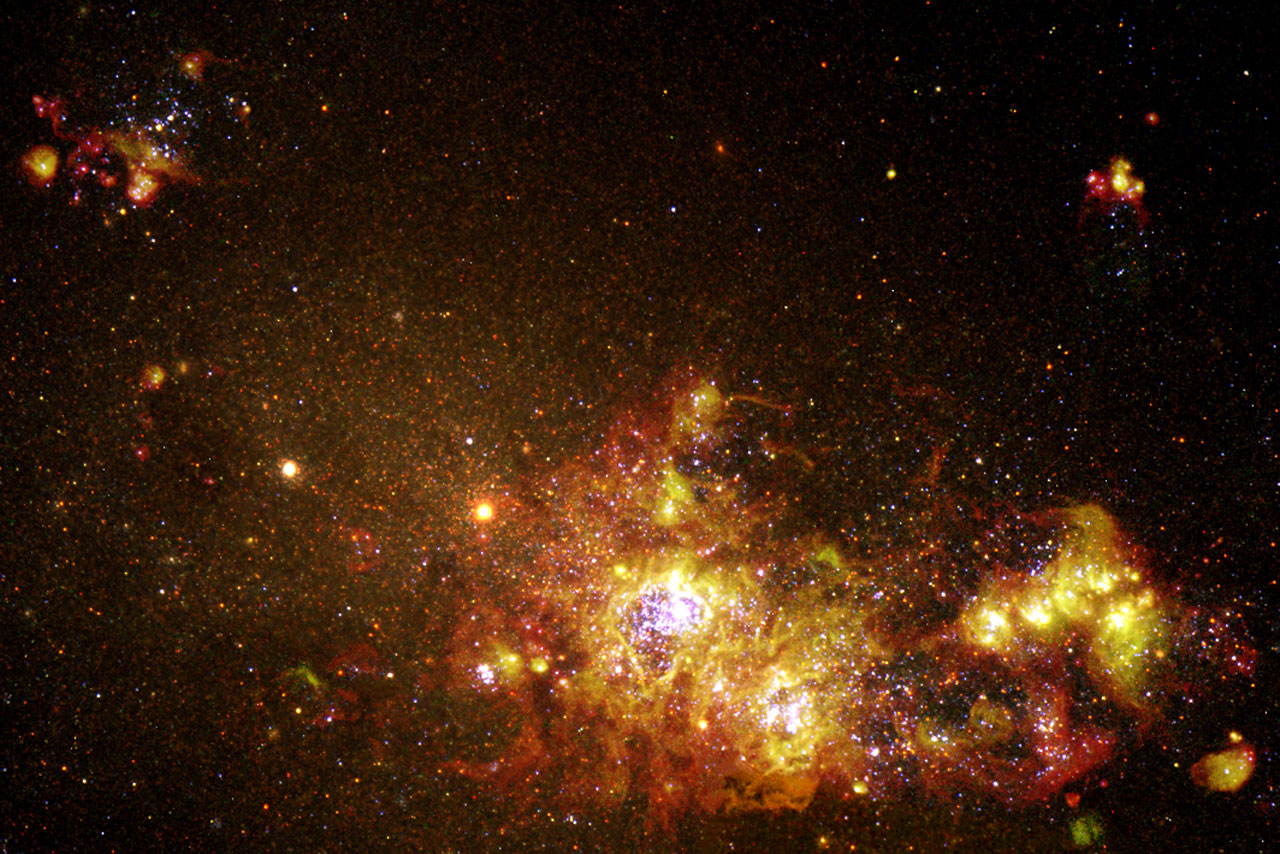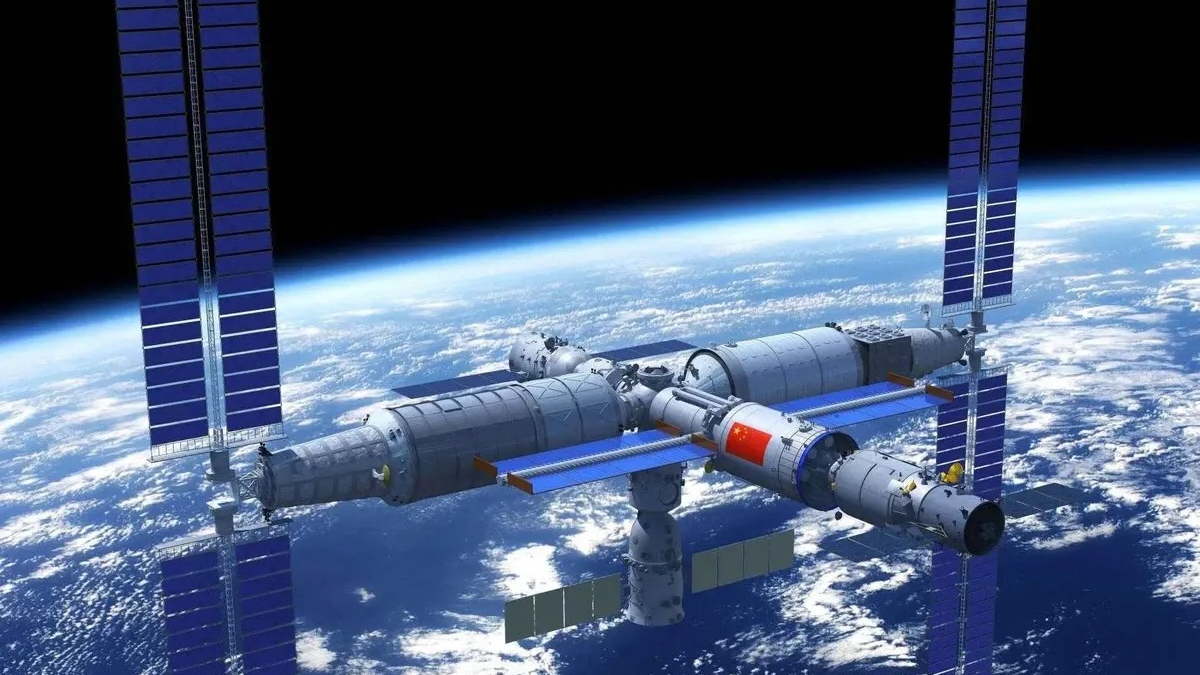Best Space Fireworks Photos Ever
Fireworks Galaxy
NGC 6946, or "The Fireworks Galaxy," is a neighbor of our Milky Way galaxy. It is located approximately 10 million light-years away in Cepheus. This image was captured with the Spitzer space telescope's Infrared Array Camera (IRAC) on June 23, 2008.
Space Skyrocket
Herbig-Haro 110 is a geyser of hot gas from a newborn star that splashes up against and ricochets off the dense core of a cloud of molecular hydrogen. This image is a composite of data taken in 2004, 2005 and 2011, and was released July 3, 2012.
The Rockets' Red Glare
Four of five sounding rockets liftoff from NASA’s Wallops Flight Facility (Virginia) in this time-lapse photograph of the ATREX mission. The experiment took place on March 27, 2012, producing white clouds to study fast-moving winds high in the thermosphere. The first rocket was launched at 4:58 am EDT, with following launches occurring at 80-second intervals.
Dark Fireworks
This screen capture from the close-up view of the June 7, 2011 solar event shows the sunspot complex originating the flare and the coronal mass ejection plasma cloud falling back towards the sun, described as "dark fireworks."
SN2006gy Supernova Super Explosion
Eta Carinae is drawing closer to its ultimate explosive demise. When Eta Carinae explodes, it will be a spectacular fireworks display seen from Earth, perhaps rivaling the moon in brilliance. Its fate has been foreshadowed by the recent discovery of SN2006gy, a supernova in a nearby galaxy that was the brightest stellar explosion ever seen. This composite image shows optical light (blue) and X-ray light (orange and yellow).
Wild Fireworks Spotted in Space
The new near-infrared image of the Helix Nebula, showing comet-shaped knots within, was released July 2, 2009. Scientists noted that these features look like a fireworks display in space.
Eta Carinae Fireworks
Artist's conception of the fast blast wave from Eta Carinae's 1843 eruption, which today has caught up with a slow-moving shell ejected in a previous outburst about 1,000 years ago, producing a bright fireworks display that heats the older shell and makes it emit X-rays (orange). The well-known two-lobed "Homunculus" nebula, a slow-moving shell of gas and dust also produced in the 1843 eruption, is shown closer to the star, which is a hot blue supergiant.
Breaking space news, the latest updates on rocket launches, skywatching events and more!
Fireworks in Nebula NGC 3603
This nebula, located 20,000 light-years away in the constellation Carina, contains a central cluster of huge, hot stars called NGC 3603. The Hubble Space Telescope image was captured in August 2009 and December 2009 with the Wide Field Camera 3.
Hot Clumps Look Like Fireworks!
This NASA/ESA Hubble Space Telescope picture of the energetic star WR124 reveals it is surrounded by hot clumps of gas being ejected into space at speeds of over 150,000 kilometres per hour, somewhat resembling an aerial fireworks explosion.
Up in Smoke!
This supernova remnant, denoted LMC N 49, within the Large Magellanic Cloud, contains delicate filaments resembling puffs of smoke and sparks trailing from expoded fireworks. They are actually sheets of debris from a stellar explosion.
Star Formation in Galaxy NGC 4214 Looks Like Fireworks
Newly released images obtained with the NASA/ESA Hubble Space Telescope in July 1997 reveal episodes of star formation that are occurring across the face of the nearby galaxy NGC 4214. Located some 13 million light-years from Earth, NGC 4214 is currently forming clusters of new stars from its interstellar gas and dust.

Space.com is the premier source of space exploration, innovation and astronomy news, chronicling (and celebrating) humanity's ongoing expansion across the final frontier. Originally founded in 1999, Space.com is, and always has been, the passion of writers and editors who are space fans and also trained journalists. Our current news team consists of Editor-in-Chief Tariq Malik; Editor Hanneke Weitering, Senior Space Writer Mike Wall; Senior Writer Meghan Bartels; Senior Writer Chelsea Gohd, Senior Writer Tereza Pultarova and Staff Writer Alexander Cox, focusing on e-commerce. Senior Producer Steve Spaleta oversees our space videos, with Diana Whitcroft as our Social Media Editor.
